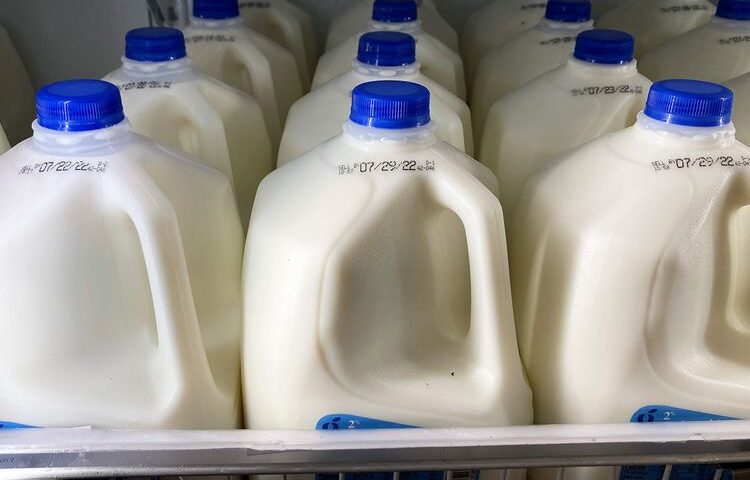The plant would support the Republic of Côte d’Ivoire’s goal of 42 per cent of its energy mix coming from renewable sources by 2030
The post Masdar, Côte d’Ivoire to develop solar power plant appeared first on Gulf Business.
The post Masdar, Côte d’Ivoire to develop solar power plant appeared first on Gulf Business.
Month: March 2023
How hospitals can leverage data-driven video technology
Innovations in the industry have increased opportunities and possibilities of videos and how people and the government can use them
The post How hospitals can leverage data-driven video technology appeared first on Gulf Business.
The post How hospitals can leverage data-driven video technology appeared first on Gulf Business.
How art is being incorporated into investment portfolios for diversification
Developments within the art market over the last decade have been followed almost as closely as those within the stock market
The post How art is being incorporated into investment portfolios for diversification appeared first on Gulf Business.
The post How art is being incorporated into investment portfolios for diversification appeared first on Gulf Business.
Dubai Model Centre to drive UAE to global top in government development
In its 10th year, Dubai Model Centre is currently supporting improvement projects in more than 70 services across 31 government entities each year.
he Dubai Model Centre (DMC), has launched a new project to turn the UAE into a regional as well as international model for government development, making it one of the ten best countries in trust in government, future readiness and smart services indices.
The new project is in line with the vision of Sheikh Mohammed bin Rashid Al Maktoum, Vice-President and Prime Minister of the UAE and Ruler of Dubai.
“The primary goal of the Dubai Model Centre is to work with every government entity in the emirate to enhance the level of service delivery, taking it to unprecedented levels to make the emirate one of the best in the world in which to live, work, invest and grow,” Dubai Model Centre’s senior director Eman Al Suwaidi said.
To achieve this, the Dubai Model Centre will implement two methodologies: the Dubai Model for Government Services (DMGS), a multi-phased collaborative approach for service improvement, and City Makers, a design-thinking approach aimed at improving the customer experience of shared services provided across several government entities, the Dubai Media Office said in a statement on Wednesday.
Both of this will include researching, documenting and sharing knowledge and best practices in local and global arenas.

According to the statement, the Dubai Model is based on four guiding principles:
- Customer Engagement: Obtaining inputs from customers during the design, delivery and assessment of services to ensure their needs are being met.
- Innovation: Inspiring entities to question what they offer to customers and why, and to explore ways of improving quality by encouraging new ideas and developing pioneering initiatives.
- Reasoned Spending: Helping entities align spending priorities to serve the needs and interests of customers.
- Connected Government: Improving service quality and enabling seamless operations by integrating the services of various entities.
Following this the Dubai Model Centre will also “collate” data from every government entity through suggestions, complaints, surveys, audits, focus groups or customer events.
This will eventually be channelled into the Dubai Government Unified Customer Experience Tool, “which measures customer experience and satisfaction at all service touch points,” the statement added.
In its 10th year, Dubai Model Centre is also currently supporting improvement projects in more than 70 services across 31 government entities each year, the statement said.
“Data published in 2020 show that the Dubai Model Centre has improved 370 government services, contributing to almost AED700 million in savings and boosting service quality by 90 percent. These service improvements can be felt in a wide number of touchpoints, demonstrating the Dubai Model Centre’s commitment to improving every possible interaction between residents and the government.”
Under the programme, Dubai Model Centre has launched services such as Smart Salem by the Dubai Health Authority and iDeclare.
The former service utilises advanced robots, FDA-approved digital medical equipment and artificial intelligence to deliver medical fitness tests for UAE residency visa applications. – all within 30 minutes and with minimal human interaction, the statement added.
iDeclare, a smart mobile app launched by Dubai Customs, enables passengers at Dubai International Airport to submit their customs declarations electronically, bypassing the traditional and often cumbersome paper-based processes.
Is plant-based milk good for you? What about for the planet?
Plant-based milk alternatives may be nutritionally inferior to cow’s milk, recommends FDA.
The US Food and Drug Administration released draft guidance on Wednesday recommending that dairy alternatives like almond, soy or oat milks disclose that they may be nutritionally inferior to cow’s milk. Doctors, too, say plant-based milk alternatives aren’t always the healthiest choice, especially for children. The FDA guidance comes as grocers offer dairy alternatives made from an ever-expanding assortment of nuts, cereals and other plants, including coconuts, hemp, oats, peas, quinoa and rice. Worldwide sales of alt-milks are growing steadily, driven both by the needs of consumers who have an intolerance to cow’s milk and the desire of some to reduce the environmental impact.
1. What are alt-milks?
They are beverages made, generally, by soaking a base ingredient in water, often after roasting it, then sometimes blanching or steaming it. In a process called wet milling, water is added and the material is ground up, then filtered. Extras such as stabilizers, thickeners, sweeteners, flavorings, vitamins and minerals may be added, and the liquid may be heat-treated to sterilize it. Finally, the fluid is homogenized so that it approximates the appearance and mouthfeel of cow’s milk. Based on the widely used classification system known as NOVA, developed by researchers at the University of So Paulo, alt-milks fall into category 3 for processed foods or category 4 for those that are ultra-processed, whereas cow’s milk is in category 1 – unprocessed or minimally processed food. The European Union prohibits alt-milk makers from using the word “milk” to market their products, a common practice in the US. The US dairy industry has pushed for enforcement of the FDA’s “standards of identity,” which define milk as a bovine product. US courts, however, have ruled that alt-milks aren’t misbranded because they aren’t sold as actual milk. Judges have said consumers understand that almond milk, for example, isn’t really milk.
2. How are alt-milks selling?
The market for plant-based milk globally may reach nearly $20 billion this year, according to a projection by consulting company Future Market Insights. The growth rate for sales in the previous five years was nearly 8%, according to the company, which expects a rate of almost 10% for the next 10 years. In the US, while the volume of plant-based products has grown, that of dairy milk has shrunk. Alternative milk’s share of pints sold there increased from 5.9% in 2017 to 9.4% in 2022, based on data from the market research company IRI. As a share of revenue, the figures went from 9% of $16 billion to 13% of $18 billion.
3. How many people are intolerant to milk?
In a study published in the Lancet in 2017, researchers estimated that about two-thirds of people worldwide are unable to digest or fully digest lactose, a sugar found in milk and products made from it. This is usually because of insufficient levels of lactase, an enzyme produced by the small intestine. For those with the condition, consuming milk may result in cramps, nausea, diarrhea, gas or bloating. Lactose intolerance is especially common in Asia, the Middle East and Africa, less so in Western Europe and the US. Plant-based milks contain no lactose, though those made from nuts and soy aren’t suitable for people with allergies to those foods. Milk producers have introduced no-lactose and reduced-lactose versions of their product. They accounted for 7% of milk sales by volume in the US in 2022. Alt-milk sales, however, were almost 1.6 times higher.
4. How do environmental concerns factor in?
In recent years, many consumers have said they’re trying to have a positive impact on the environment, including through their purchases, and modern dairy farming is relatively rough on the planet. The main issue is that, as part of their digestive process, cows emit the greenhouse gas methane, mostly through belching. It’s been estimated that dairy cattle account for about 3% of all greenhouse gas emissions connected to human activity. In addition, decomposing manure on dairy farms can pollute water sources. Some consumers are also motivated by concerns about the welfare of farm animals, including dairy cows. Producers of almond and rice milk have been criticized for the amount of water required to grow the main ingredients for their products. However, according to research by the Food Sustainability Analytics program at Oxford University, producing dairy milk is significantly more water-intensive.
5. How well do alt-milks approximate milk?
It varies with the product and the brand. Some reviewers say that almond and oat varieties are the closest match to dairy milk. Some of the base ingredients can produce a flavour that’s slightly off. That matters less when, rather than being imbibed as a beverage, alt-milks are poured over cereal or added to tea or coffee, as milk is about half the time when consumed by adults in the US.
6. How do alt-milks compare nutritionally to milk?
Again, it varies, but generally they are less nutrient rich. That alt-milks typically contain fewer calories can make them attractive for those concerned about weight. Soy options have been found to have similar levels of protein to milk, whereas almond, oat and rice have much lower levels. Cow’s milk also contains a wide assortment of minerals and vitamins that its imitators don’t always match. For this reason, the American Academy of Pediatrics encourages families to mostly avoid plant-based milks other than fortified soy options, unless there’s a medical necessity. Cases of severe nutritional deficiencies have resulted from infants being fed plant-based milk exclusively.
Don’t feel like exercising? It could be your microbiome.
Active people’s microbiomes can be quite different from those who rarely exercise.
Your gut may help motivate you to exercise. Or it might nudge you to skip your workout.
Which direction you take appears to be influenced by your diet and the health of your microbiome, the name given to the communities of bacteria, viruses and fungi that live in the intestines.
Intriguing new mouse studies show that the makeup of an animal’s microbiome influenced how much it wanted to exercise, in part by sending signals to the animal’s brains. Change a mouse’s microbiome, and you changed whether it felt like moving.
Although the new studies involved animals, they amplify and extend recent human research showing that active people’s microbiomes can be quite different from those of people who rarely exercise. The findings raise the possibility that, depending on how we alter our internal microbes, we might wind up enjoying – or avoiding – exercise more.
Can we boost our interest in exercise by taking probiotics or changing our diets or otherwise tweaking our gut bugs, though? Eventually, probably.
Microbiomes are also quite malleable. Our gut bugs’ numbers and types surge and dip, depending on how we live, including whether and how we exercise. A study last year found that elite, cross-country skiers’ guts contained fewer types of bacteria after a grueling season than the microbiomes of healthy non-athletes, but more of the remaining strains found in the athletes were associated with metabolic health.
While we know that exercise can influence the health of the microbiome, it’s much less clear whether the effects work the other way, and your microbiome can influence your exercise. Anecdotally, people and lab mice taking antibiotics don’t exercise much, but the reason might be that they probably felt ill before starting the drugs, discouraging physical activity.
If you give a mouse an antibiotic . . .
So, scientists at the University of California at Riverside decided to wipe out the microbiomes of mice that love to run and see how they’d respond. The UC-Riverside mice were part of an ongoing experiment in which female mice, that ran more than their lab mates, were bred to male mice of the same persuasion. Over multiple generations, the scientists developed a strain of super-runner mice. These animals voluntarily ran on wheels about three times as much as other mice. They also developed different microbiomes.
Now, for a study published last year in Behavioural Processes, the scientists gave some of these marathon mice broad-spectrum antibiotics, to kill off most of their gut bacteria. The animals continued to eat and otherwise live in unchanged ways, indicating the antibiotics hadn’t sickened them.
But when the researchers gave the animals free access to running wheels, the marathoner mice’s running mileage fell steeply. They averaged about 21 percent less distance every day, numbers that barely rebounded during the subsequent 12 days of the study.
The new experiment underscored “just how much” the microbiome seemed to be influencing the athletic animals’ willingness to run, said Theodore Garland, an evolutionary biologist at UC-Riverside, whose lab developed the marathon mice and who oversaw the new study.
How the gut talks to the brain
But Garland’s study didn’t look at how microbiomes affect exercise motivation. For that, we need the results of another ambitious study, published in December in Nature, which looked deep inside the guts and brains of mice.
In the study, scientists at the Perelman School of Medicine at the University of Pennsylvania and other institutions gathered eight types of mice, which naturally ran different daily distances, and began genotyping them and checking thousands of molecules released in their guts, blood, and brains before and during exercise.
They also gave some of the mice antibiotics, bred others to have no microbiomes from birth, let them run or sit, gathered more tissues, transplanted fecal samples from happily running mice with robust microbiomes into mice without gut bugs – and vice versa – and kept gathering reams of genetic and tissue samples.
By the end they had more than 2.1 million data points about their mice.
What they uncovered in that data was a direct communication link from the gut to the brain, activated by exercise. This communication began, they found, with the release of certain molecules in the gut during exercise, that then stimulated specialized nerves connecting the gut and midbrain.
Once turned on, these nerves sent signals prompting the release in the brain of extra dopamine, the neurochemical most associated with rewards and motivation. The scientists also found that the higher the amounts of several, specific strains of bacteria in the animals’ guts, the more dopamine their brains produced, and the more the mice ran.
When the scientists disrupted any step in the communications link, by killing gut bacteria with antibiotics or chemically blocking nerve activity or dopamine release, the affected animals started running less.
“They lost interest” in exercise, Thaiss said.
He and his co-authors speculate the gut’s involvement in exercise behavior may have evolved long ago in response to food availability. Animals that often wandered and explored – that regularly exercised – found more food, survived, and reproduced, passing along the gut-brain links that encourage exercise.
What this research means for us is still somewhat theoretical. We are not mice, although we share most of the same nerves and midbrain processes. So “it’s quite plausible” that our motivation to exercise – or not – depends, in part, on the composition of our gut bacteria, Garland said.
Can we boost our interest in exercise by taking probiotics or changing our diets or otherwise tweaking our gut bugs, though? “Eventually, probably,” Thaiss said. But scientists first need to identify the precise types of gut bacteria involved in exercise motivation in people, assuming they exist, he said, which could take years.
In the meantime, the mouse studies suggest exercise may be its own best motivator. When we work out, we remake our microbiome, and our renovated gut can then, it seems, reinforce our desire to exercise.
But to benefit, the first step is to take some first steps.
Sheikh Ahmed bin Mohammed offers condolences to FIA chief following death of his son
Saif Ben Sulayem had followed his father’s footsteps into motor racing.
Sheikh Ahmed bin Mohammed, chairman of Dubai Media Council, on Thursday offered his condolences to FIA President Mohammed Ben Sulayem following the death of his son Saif.
Saif Ben Sulayem had followed his father’s footsteps into motor racing and competed in the inaugural 2016-17 UAE Formula 4 series that included current Formula One rookies Oscar Piastri and Logan Sargeant, recording a number of top 10 finishes that season.
His father Mohammed, a 14-time Middle East Rally Champion, was appointed FIA President in December 2021.
How Dubai Police use biometric technology to fight crime
Experts use advanced tools to help identify suspects through their body shape and stride.
Dubai Police are using cutting-edge technology to ensure there is no such thing as the perfect crime.
Officials said this week at the World Police Summit 2023 that the force used biometrics to identify suspects.
While facial recognition and fingerprint technology is used by police around the world, there are other ways to catch criminals.
This new age of policing means that those who break the law can still be identified, even if they wore a mask and gloves, and ensured no DNA evidence was left at the scene.
If a suspect is disguised or CCTV footage is too grainy, officers can analyse characteristics such as a person’s gait and the shape of their hands and ears to build a clearer picture of who they are.
Footage can be compared to a comprehensive video database that includes recordings from CCTV cameras.
Dubai Police said the advanced technology, which they have used since 2016, helped officers to make more than 3,000 arrests last year.
The technology proved particularly useful during the Covid-19 pandemic, when people wore masks outdoors and when visiting indoor venues.
“To identify suspects through gait patterns, a biometric system uses specialised cameras such as LiDAR cameras to capture the movement of an individual’s body,” said Lt Col Dr Hamad Al Awar, head of video and image examination at Dubai Police’s forensic e-evidence department.
“In some videos of crimes that are of low resolution or in which the suspects are hiding their faces, we analysed their biometrics.”
The technology creates a biometric template by examining unique patterns of movement, including the way a person swings their arms and the length of their stride.
Body measurements can also be used to create biometric templates.
Once created, the templates can be compared to a database to identify potential matches.
Lt Col Dr Al Awar said Dubai Police used the technology to help other forces in the UAE.
In 2021, The National reported that Dubai Police used an advanced crime-fighting tool widely referred to as “brain fingerprinting”.
Police carried out a year of trials on the “memory print” technique before using it in investigations.
A suspect is typically fitted with a skullcap that features a set of electrodes that detect their brain activity while they listen to statements associated with a crime.
Dubai Police’s ‘brain fingerprint technology’ – in pictures
Building a DNA database
Police have also used technology to crack unsolved cases from the past.
A genome project, based on PhD research by Maj Mohammed Al Marri of Dubai Police in 2020, focused on the use of DNA to isolate and identify genetic variants in the Middle East. The University of Cambridge assisted in the study.
“There are 23 million genetic variants recorded globally. The study identified five million specific to the Middle East region,” said First Lt Mohammed Al Rahma, a biology and DNA expert at Dubai Police’s department of forensics and criminology.
The force has been using the technology to create a national DNA database that can be used to identify suspects, victims and missing people.
“The study enabled the utilisation of the data to identify characteristics of suspects through DNA collected at crime scenes,” First Lt Al Rahma said.
The technology is most useful in solving cases in which DNA evidence is not available.
“This is because it enables forensic investigators to significantly narrow down the suspect pool by identifying traits, ethnicity and origin of the suspect,” he said.
The use of the technology is to be expanded by the end of the year.
UAE: Sheikh Mohammed announces $100 billion Asian Infrastructure Investment Bank office
Establishment of the bank aims at driving investments in infrastructure to promote Asia’s accelerated development.
An office of the Asian Infrastructure Investment Bank (AIIB) will be established in the UAE, the country’s Vice-President announced on Monday as he chaired a Cabinet meeting.“The bank brings in 57 countries, with a starting capital of $100 billion and aims at driving investments in infrastructure to promote Asia’s accelerated development,” said His Highness Sheikh Mohammed bin Rashid Al Maktoum, Vice-President and Prime Minister of the UAE and Ruler of Dubai.
The Cabinet also approved four international agreements.
It passed the UAE Circular Economy Policy 2031. The agenda includes developing 22 policies in sustainable transport, food production and consumption, manufacturing and green infrastructure.
The Cabinet approved the ‘UAE Award for Market Leadership’, aiming to recognise the efforts of the private sector enterprises. The aim is to honour leading businessmen and employees of the sector, and highlight the competitiveness of the country’s labour market.
Over Dhs1bn in sales achieved at launch of St. Regis Residences, reveals Driven Properties
Located in Downtown, the project is set for completion in 2025
The post Over Dhs1bn in sales achieved at launch of St. Regis Residences, reveals Driven Properties appeared first on Gulf Business.
The post Over Dhs1bn in sales achieved at launch of St. Regis Residences, reveals Driven Properties appeared first on Gulf Business.





